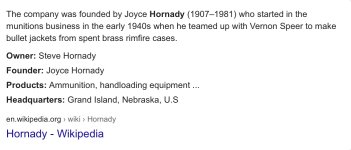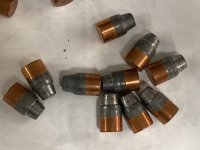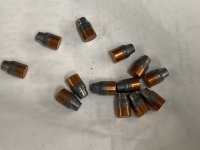I’ve got some OLD 44 caliber half jacket bullets that are in a Hornady box. I’ve been told that they most likely are Speer bullets...that at some time in the distant past, Hornady and Speer were together, or at least did some business together. I was told (all this info came from forum questions/answers many years ago and a call to Hornady!) that they were short lived and discontinued because the copper (half) jacket was seated below the case mouth and firing the round sometimes stripped the jacket off the bullet...the crimp would dislodge the jacket...sometimes. I don’t know.
But that just sets the stage for my real question. Can it be assumed that a 44 spl round, loaded to the same COAL as a 44 magnum, using the same bullet, would have (nearly) the same resulting internal case volume in both cases? I found that these bullets, if loaded to 1.610” in a 44 spl case, leaves the jacket just outside of the case mouth...maybe .030”
I want to load it to the lightest 44 magnum in my books, in spl cases. Actually, just a bit lower, even. The manuals list 18.3 and 18.4 gr of 2400 in magnum cases. I am looking at 18.0 gr 2400 in the spl case, loaded to the magnum coal.
Am I wrong in saying that the resulting case volume would be nearly identical? The brass is the same, other than the length, no? Again, I only want to do this to use up 200 otherwise (supposedly) unusable bullets.
Thanks.
But that just sets the stage for my real question. Can it be assumed that a 44 spl round, loaded to the same COAL as a 44 magnum, using the same bullet, would have (nearly) the same resulting internal case volume in both cases? I found that these bullets, if loaded to 1.610” in a 44 spl case, leaves the jacket just outside of the case mouth...maybe .030”
I want to load it to the lightest 44 magnum in my books, in spl cases. Actually, just a bit lower, even. The manuals list 18.3 and 18.4 gr of 2400 in magnum cases. I am looking at 18.0 gr 2400 in the spl case, loaded to the magnum coal.
Am I wrong in saying that the resulting case volume would be nearly identical? The brass is the same, other than the length, no? Again, I only want to do this to use up 200 otherwise (supposedly) unusable bullets.
Thanks.



